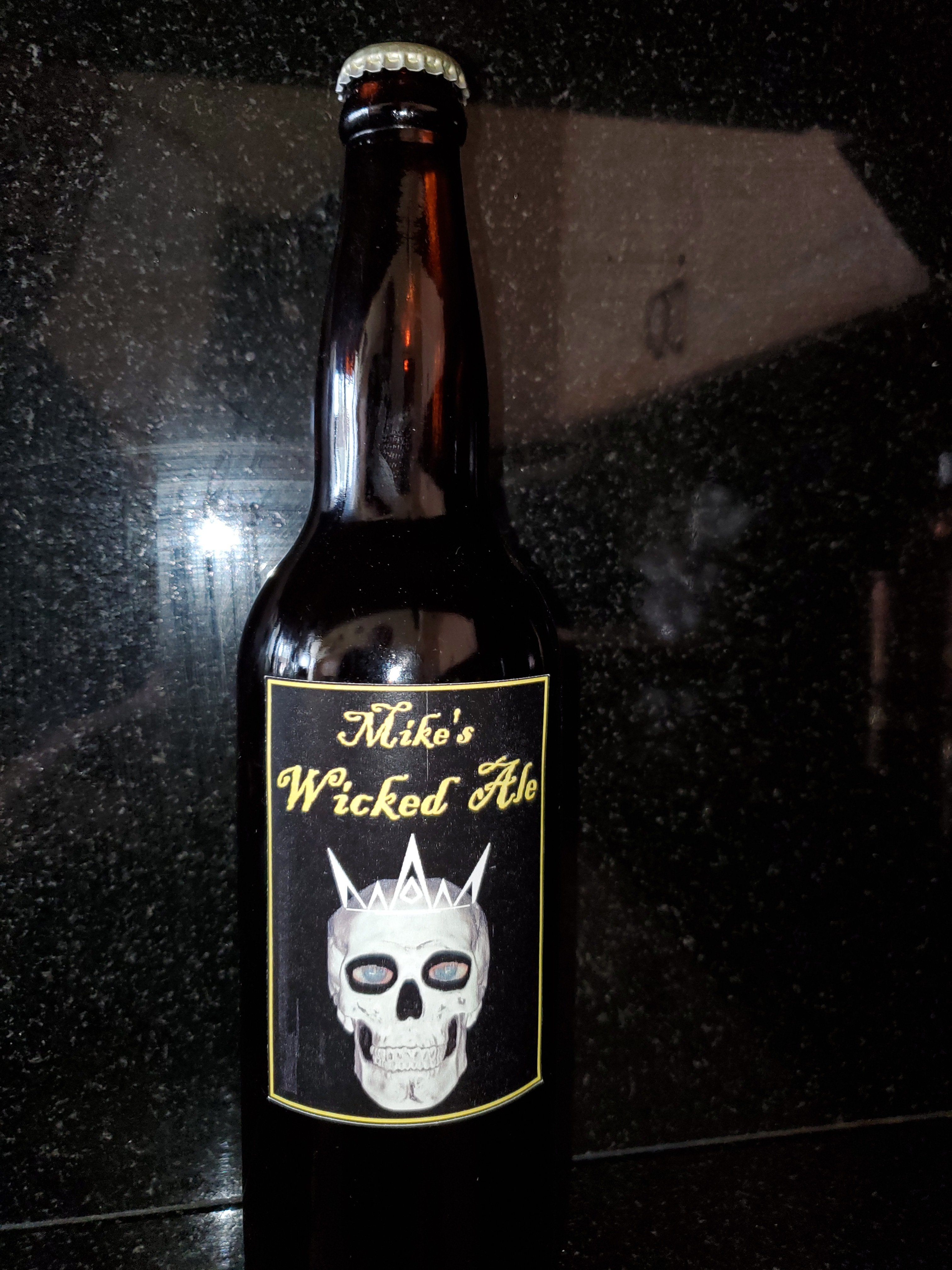Can anyone review this BIABasket recipe/process for 5 gallons of finished Nut Brown Ale? This will be my first time to use my new rig, which is a propane fired single vessel (Keggle) with a 800 micron grain basket, and a recirculation "pipe" feeding from the top of the Keggle with holes in it extending through the center of my basket. (I modified this request to explain my method). I plan to recirculate at as high a rate as possible. Do any of you with BIAB, especially using a grain basket, experience see any potential issues?
Here is what I plan to do. The grains are from a NB Nut Brown Ale all grain kit.
- I have an 8.5 lb grain bill, and the total amount of water will be 7 gallons based on;
- 5 Gallons to the fermentation vessel
- 0.43 Gallons (0.05 Gal/lb x 8.5 lb) for grain absorption
- 1.46 Gallons boil off (1.17 Gallons x 1.25 Gal/Hr)
- 0.1 Gallons left behind in trub
- Lightly spray the grain to moisten it, and mill to 0.036 inches with my monster mill, and add it to my grain basket
- Lower the grain basket into heated water in the Keggle to stabilize at 154F and hold for 60 minutes for saccharification rest, recirculating with the center fed pipe the entire time
- After 60 minutes, raise the grain basket out of the liquid, raise the water temperature to 170F, and lower the basket for a 10 minute mashout, recirculating as before
- After 10 minutes raise basket, press grain, and dispose of grain and set grain basket aside
- Bring the wort to a boil and start a hop schedule, recirculating during the entire boil;
- 1 oz Fuggle pellets for 60 minutes
- 1 oz Fuggle pellets at flameout
- 5 minutes after flameout, catch all trub possible with a 400 micron basket held under the return port to the keggle (I tried this before with 2 oz pellets for an extract brew with no clogs)
- Chill to 65F with a plate chiller into my Big Mouth Bubbler, aerate wort by splashing with the lid on, and pitch dry Nottingham Ale Yeast
- Allow to ferment - I don't have any questions about the fermentation part, just the above
Thanks much if you have any suggestions, and cheers!
Here is what I plan to do. The grains are from a NB Nut Brown Ale all grain kit.
- I have an 8.5 lb grain bill, and the total amount of water will be 7 gallons based on;
- 5 Gallons to the fermentation vessel
- 0.43 Gallons (0.05 Gal/lb x 8.5 lb) for grain absorption
- 1.46 Gallons boil off (1.17 Gallons x 1.25 Gal/Hr)
- 0.1 Gallons left behind in trub
- Lightly spray the grain to moisten it, and mill to 0.036 inches with my monster mill, and add it to my grain basket
- Lower the grain basket into heated water in the Keggle to stabilize at 154F and hold for 60 minutes for saccharification rest, recirculating with the center fed pipe the entire time
- After 60 minutes, raise the grain basket out of the liquid, raise the water temperature to 170F, and lower the basket for a 10 minute mashout, recirculating as before
- After 10 minutes raise basket, press grain, and dispose of grain and set grain basket aside
- Bring the wort to a boil and start a hop schedule, recirculating during the entire boil;
- 1 oz Fuggle pellets for 60 minutes
- 1 oz Fuggle pellets at flameout
- 5 minutes after flameout, catch all trub possible with a 400 micron basket held under the return port to the keggle (I tried this before with 2 oz pellets for an extract brew with no clogs)
- Chill to 65F with a plate chiller into my Big Mouth Bubbler, aerate wort by splashing with the lid on, and pitch dry Nottingham Ale Yeast
- Allow to ferment - I don't have any questions about the fermentation part, just the above
Thanks much if you have any suggestions, and cheers!
Last edited:








